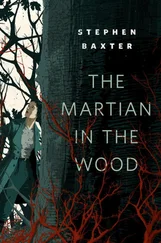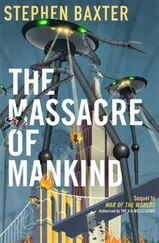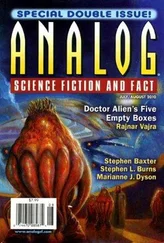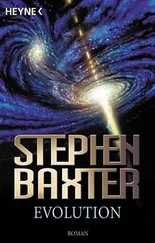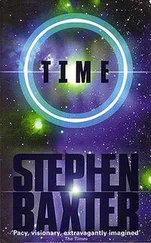Finally — and most pleasurably — I took a pipe from the knapsack, packed it with tobacco, and lit it from the candle flame.
It was in this condition, with my few possessions around me, and the rich scent of my finest tobacco still lingering, that I lay down on the little bed, pulled the blanket over me and slept.
I awoke in the dark.
It was an odd thing to wake without daylight — like being disturbed in the small hours — and I never felt refreshed by a sleep, the whole time I was in the Morlocks’ Dark Night; it was as if my body could not calculate what time of day it was.
I had told Nebogipfel that I should like to inspect the Time Machine, and I felt a great nervousness as I went through a brief breakfast and toilet. My plan did not amount to much in the way of strategy: it was merely to take the machine, at the first opportunity! I was gambling that the Morlocks, after millennia of sophisticated machines which could change their very shapes, would not know what to make of a device as crude, in its construction, as my Time Machine. I thought they would not expect that so simple an act as the reattachment of two levers could restore the machine’s functionality — or so I prayed!
I emerged from the shelter. After all my adventures, the levers to the Time Machine were safe in my jacket’s inside pocket.
Nebogipfel walked towards me, his thin feet leaving their sloth-like footprints in the sand, and his two hands empty. I wondered how long he had been near, waiting for my emergence.
We walked along the flank of the Hill together, heading south in the direction of Richmond Park. We set off without preamble, for the Morlocks were not given to unnecessary conversation.
I have said that my house had stood on the Petersham Road, on the stretch below Hill Rise. As such it had been halfway up the shoulder of Richmond Hill, a few hundred yards from the river, with a good westerly prospector it would have had, if not for the intervening trees — and I had been able to see something of the meadows at Petersham beyond the river. Well, in the Year A.D. 657,208, all of the intervening clutter had been swept away; and I was able to see down the flank of a deepened valley to where the Thames lay in its new bed, glittering in the star-light. I could see, here and there, the coal-hot mouths of the Morlocks’ heat-wells, puncturing the darkened land. Much of the hill-side was bare sand, or given over to moss; but I could see patches of what looked like the soft glass which had carpeted the Sphere, glittering in the enhanced starlight.
The river itself had carved out a new channel a mile or so from its nineteenth-century position; it appeared to have cut off the bow from Hampton to Kew, so that Twickenham and Teddington were now on its east side, and it seemed to me that the valley was a good bit deeper than in my day — or perhaps Richmond Hill had been lifted up by some other geological process. I remembered a similar migration of the Thames in my first voyage into time. Thus, it seemed to me, the discrepancies of human History are mere froth; under it all, the slow processes of geology and erosion would continue their patient work regardless.
I spared a moment to glance up the Hill towards the Park, for I wondered for how long those ancient woodlands and herds of red and fallow deer had survived the winds of change. Now, the Park could be no more than a darkened desert, populated only by cacti and a few olives. I felt my heart harden. Perhaps these Morlocks were wise and patient perhaps their industrious pursuit of knowledge on the Sphere was to be applauded — but their neglect of the ancient earth was a shame!
We reached the vicinity of the Park’s Richmond Gate, close to the site of the Star and Garter, perhaps half a mile from the site of my house. On a level patch of land, a rectangular platform of soft glass had been laid; this platform shimmered in the patchy star-light. It appeared to be manufactured of that marvelous, glassy material of which the Sphere Floor was composed; and from its surface had been evoked a variety of the podiums and partitions which I had come to recognize as the characteristic tools of the Morlocks. These were abandoned now; there was nobody about but Nebogipfel and I. And there — at the heart of the platform — I saw a squat and ugly tangle of brass and nickel, with ivory like bleached bone shining in the star-light, and a bicycle-saddle in the middle of it all: it was my Time Machine, evidently intact, and ready to take me home!
[22]
Rotations And Deceptions
I felt my heart pump; I found it difficult to walk at a steady pace behind Nebogipfel — but walk I did. I dropped my hands into my jacket pockets and I grasped the two control levers there. I was already close enough to the machine to see the studs on which the levers must be fitted for the thing to work — and I meant to launch the machine as soon as I could, and to get away from this place!
“As you can see,” Nebogipfel was saying, “the machine is undamaged — we have moved it, but not attempted to pry into its workings…”
I sought to distract him from his close attention. “Tell me: now that you’ve studied my machine, and listened to my theories on the subject, what is your impression?”
“Your machine is an extraordinary achievement — ahead of its age.”
I have never been one with much patience for compliments. “But it is the Plattnerite which enabled me to construct it,” I said.
“Yes. I would like to study this ’Plattnerite’ more closely.” He donned his goggles, and studied the machine’s shimmering quartz bars. “We have talked — a little — of multiple Histories: of the possible existence of several editions of the world. You have witnessed two yourself—”
“The history of Eloi and Morlock, and the History of the Sphere.”
“You must think of these versions of History as parallel corridors, stretching ahead of you. Your machine allows you to go back and forth along a corridor. The corridors exist independently of each other: looking ahead from any point, a man looking along one corridor will see a complete and self-consistent History — he can have no knowledge of another corridor, and nor can the corridors influence each other.
“But in some corridors conditions may be very different. In some, even the laws of physics may differ…”
“Go on.”
“You said the operation of your machine depended on a twisting about of Space and Time,” he said. “Turning a Journey in Time into one through Space. Well, I agree: that is, indeed, how the Plattnerite exerts its effects. But how is this achieved?
“Picture, now,” he said, “a universe — another History — in which this Space-Time twisting is greatly pronounced.”
He went on to describe a variant of the universe almost beyond my imagining: in which rotation was embedded in the very fabric of the universe.
“Rotation suffuses every point of Space and Time. A stone, thrown outward from any point, would be seen to follow a spiral path: its inertia would act like a compass, swinging around the launch point. It is even thought by some that our own universe might undergo such a rotation, but on an immensely slow scale: taking a hundred thousand million years to complete a single turn…
“The rotating-universe idea was first described some decades after your time — by Kurt Gödel, in fact.”
“Gödel?” It took me a moment to place the name. “The man who will demonstrate the imperfectibility of mathematics?”
“The same.”
We walked around the machine, and I kept my stiff fingers wrapped around the levers. I planned to maneuver myself into precisely the most propitious spot to reach the machine. “Tell me how this explains the operation of my machine.”
Читать дальше
Конец ознакомительного отрывка
Купить книгу

